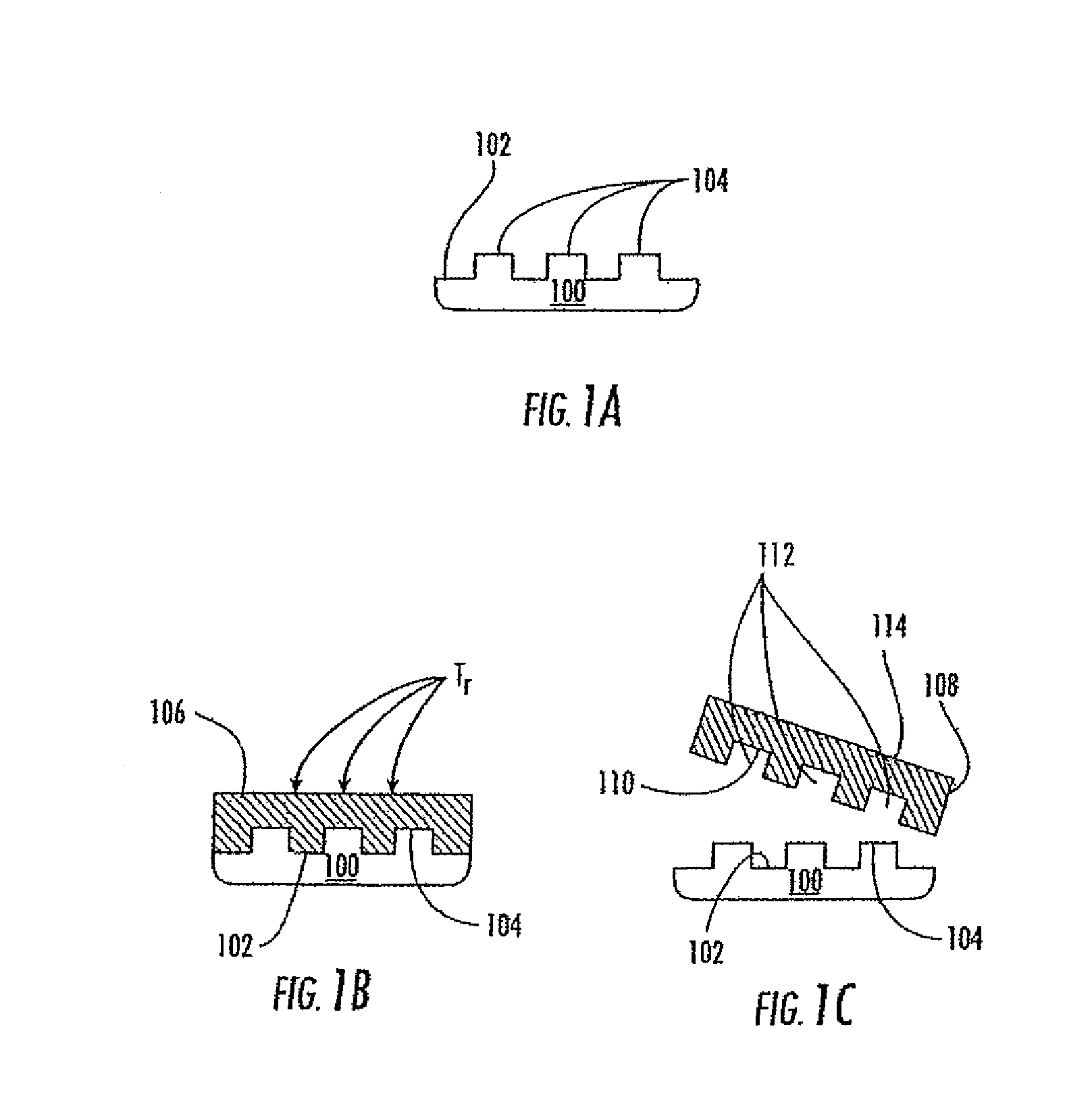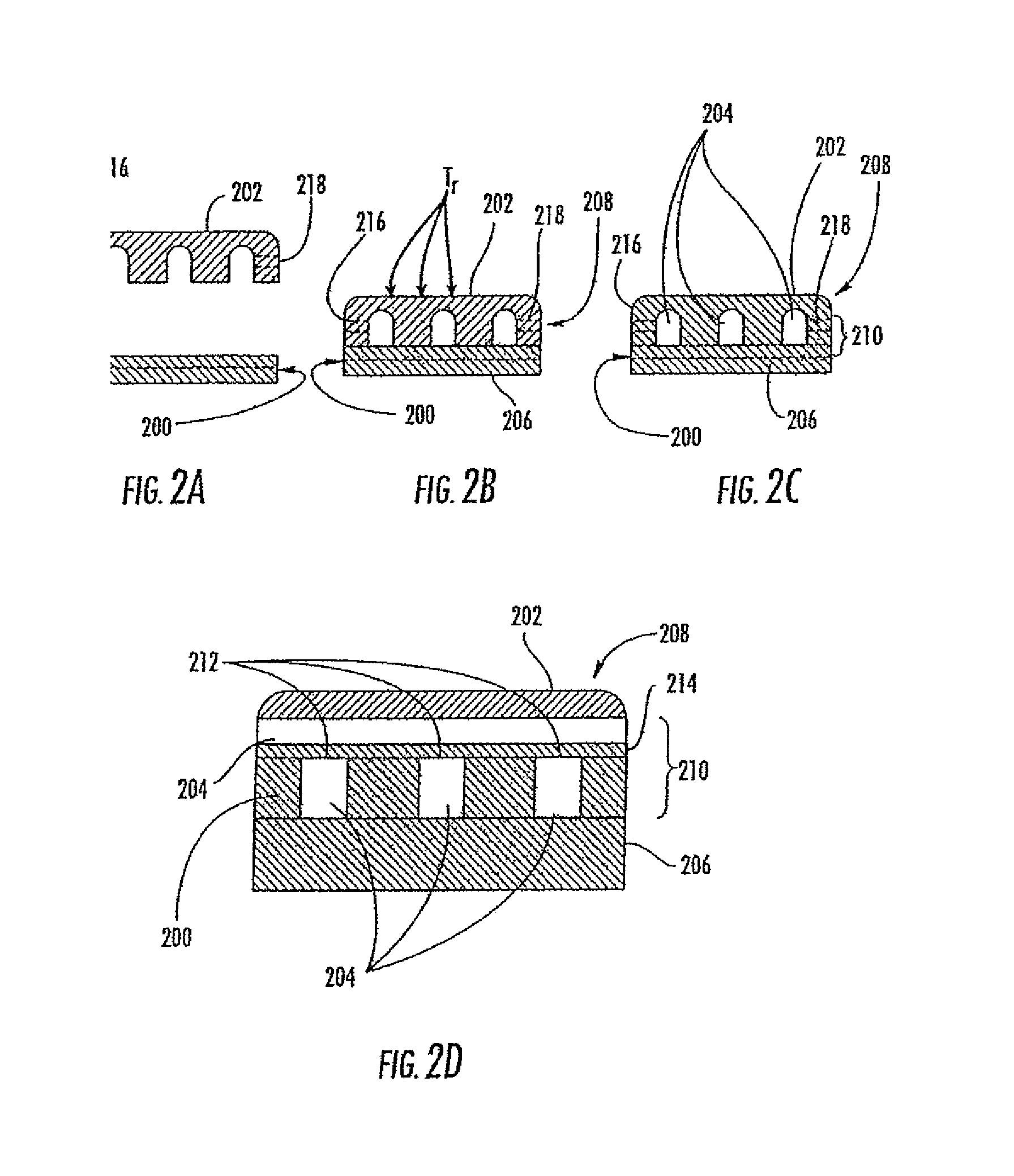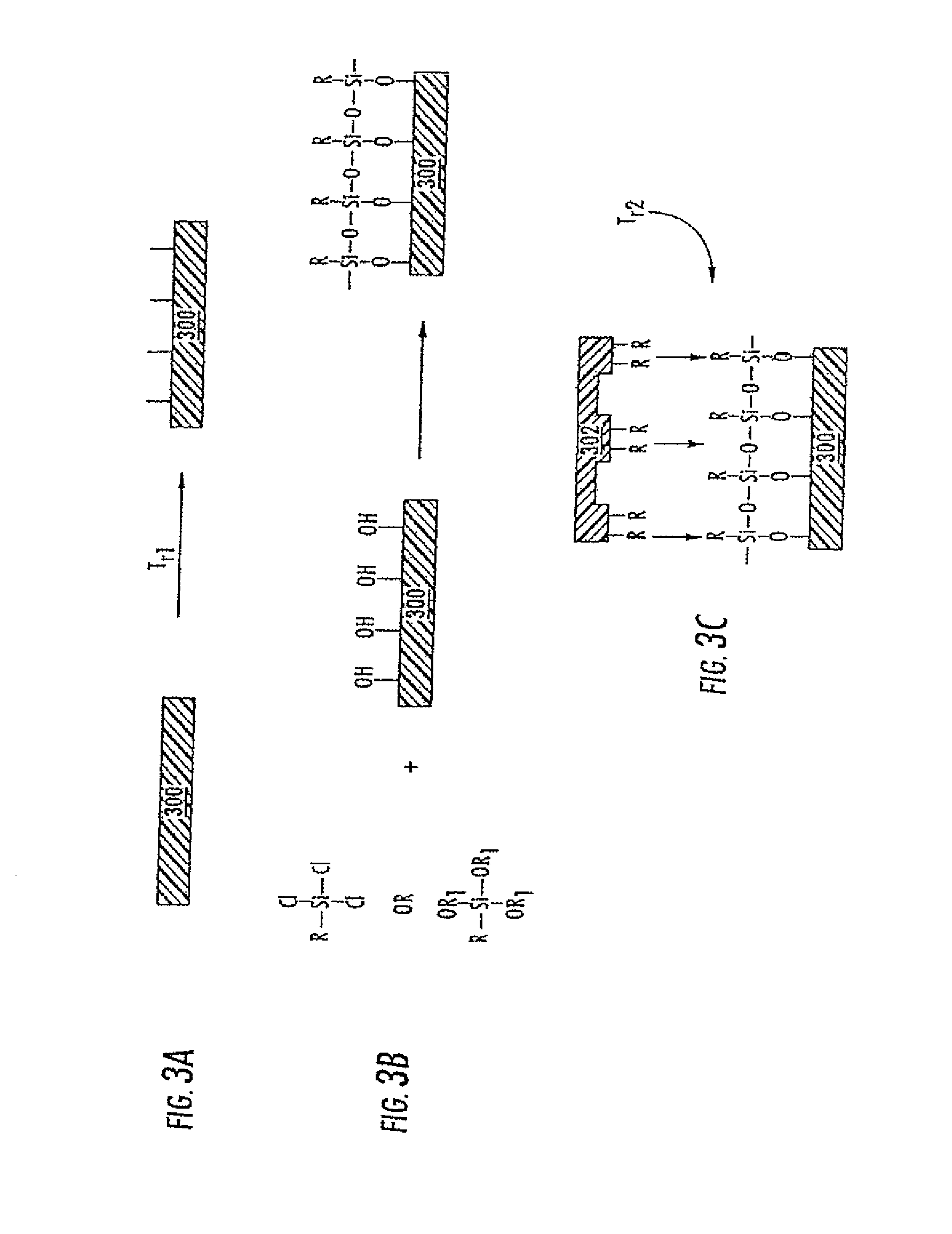Methods and materials for fabricating microfluidic devices
a microfluidic device and microfluidic technology, applied in microstructural devices, microstructural technology, polyether coatings, etc., can solve the problems of microfluidic applications that require clean-room conditions, photolithography and etching techniques are expensive and labor-intensive, and pdms suffers from multiple drawbacks, etc., to achieve low surface energy
- Summary
- Abstract
- Description
- Claims
- Application Information
AI Technical Summary
Benefits of technology
Problems solved by technology
Method used
Image
Examples
example 1
[0657]A liquid PFPE precursor having the structure shown below (where n=2) is blended with 1 wt % of a free radical photoinitiator and poured over a microfluidics master containing 100-μm features in the shape of channels. A PDMS mold is used to contain the liquid in the desired area to a thickness of about 3 mm. The wafer is then placed in a UV chamber and exposed to UV light (λ=365) for 10 minutes under a nitrogen purge. Separately, a second master containing 100-μm features in the shape of channels is spin coated with a small drop of the liquid PFPE precursor over top of it at 3700 rpm for 1 minute to a thickness of about 20 μm. The wafer is then placed in a UV chamber and exposed to UV light (λ=365) for 10 minutes under a nitrogen purge. Thirdly, a smooth, flat PFPE layer is generated by drawing a doctor's blade across a small drop of the liquid PFPE precursor across a glass slide. The Slide is then placed in a UV chamber and exposed to UV light (λ=365) for 10 minutes under a ni...
example 2
Thermal Free Radical
Glass
[0659]A liquid PFPE precursor encapped with methacrylate groups is blended with 1 wt % of 2,2-Azobisisobutyronitrile and poured over a microfluidics master containing 100-μm features in the shape of channels. A PDMS mold is used to contain the liquid in the desired area to a thickness of about 3 mm. The wafer is then placed in an oven at 65° C. for 20 hours under nitrogen purge. The cured layer is then removed, trimmed, and inlet holes are punched through it using a luer stub. The layer is then placed on top of a clean glass slide and fluids can be introduced through the inlet holes.
example 3
Thermal Free Radical
Partial Cure
Layer to Layer Adhesion
[0660]A liquid PFPE precursor encapped with methacrylate groups is blended with 1 wt % of 2,2-Azobisisobutyronitrile and poured over a microfluidics master containing 100-μm features in the shape of channels. A PDMS mold is used to contain the liquid in the desired area to a thickness of about 3 mm. The wafer is then placed in an oven at 65° C. for 2-3 hours under nitrogen purge. Separately, a second master containing 100-μm features in the shape of channels is spin coated with a small drop of the liquid PFPE precursor over top of it at 3700 rpm for 1 minute to a thickness of about 20 μm. The wafer is then placed in an oven at 65° C. for 2-3 hours under nitrogen purge. Thirdly, a smooth, flat PFPE layer is generated by drawing a doctor's blade across a small drop of the liquid PFPE precursor across a glass slide. The wafer is then placed in an oven at 65° C. for 2-3 hours under nitrogen purge. The thicker layer is then removed, ...
PUM
| Property | Measurement | Unit |
|---|---|---|
| Young's modulus | aaaaa | aaaaa |
| surface energy | aaaaa | aaaaa |
| elongation at break | aaaaa | aaaaa |
Abstract
Description
Claims
Application Information
 Login to View More
Login to View More - R&D
- Intellectual Property
- Life Sciences
- Materials
- Tech Scout
- Unparalleled Data Quality
- Higher Quality Content
- 60% Fewer Hallucinations
Browse by: Latest US Patents, China's latest patents, Technical Efficacy Thesaurus, Application Domain, Technology Topic, Popular Technical Reports.
© 2025 PatSnap. All rights reserved.Legal|Privacy policy|Modern Slavery Act Transparency Statement|Sitemap|About US| Contact US: help@patsnap.com



